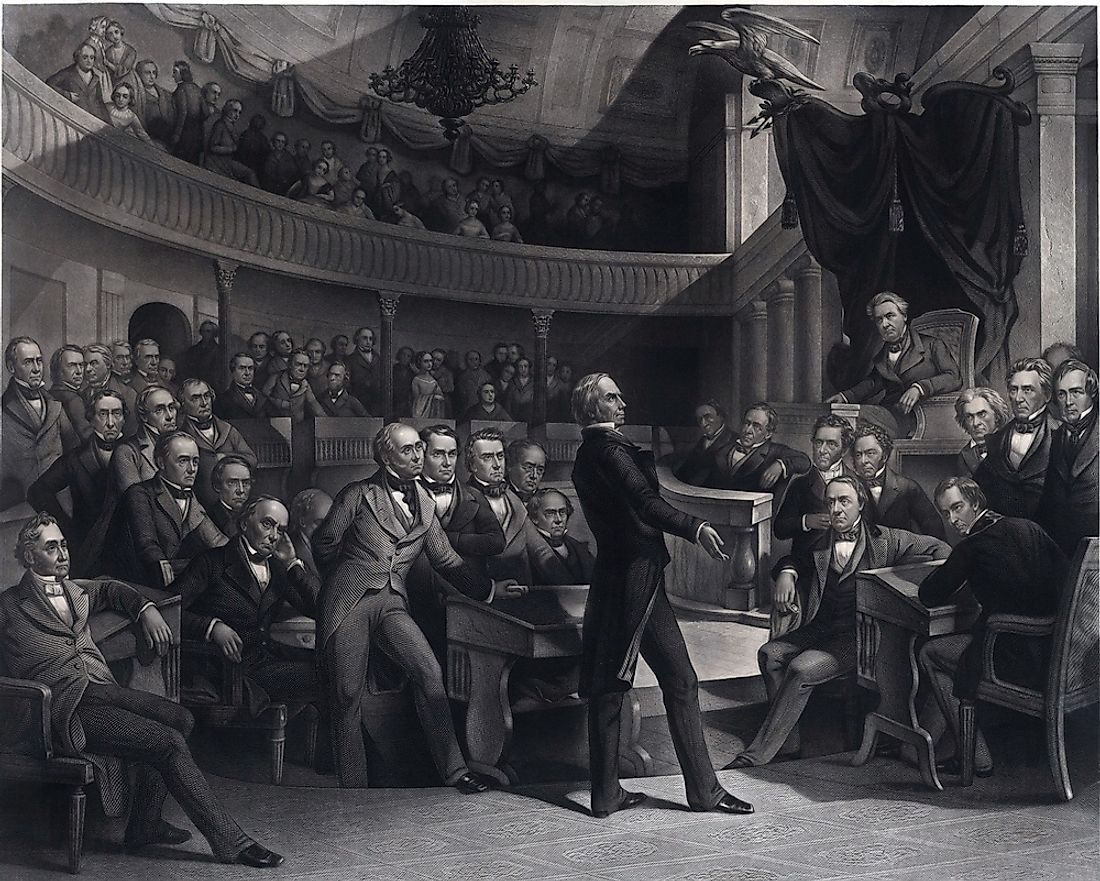What Was the Compromise of 1850?

In the history of the United States, the Compromise of 1850 refers to a set of legislative measures proposed by Kentucky Senator Henry Clay and unanimously passed by the Congress and gazette as laws. Senator Henry Clay was thereafter referred to as "the great compromiser." The laws were passed with the aim to de-escalate the tension created by outstanding issues concerning slavery that threatened to dissolve the union.
Events Leading to the Compromise
The crisis began when California requested to be admitted to the union as a free state on December 3, 1849. California also requested to be admitted under a constitution that prohibits slavery. The spread of slavery into areas that had been ceded by Mexico during the Mexican-American War further complicated the crisis. In 1848, Zachary Taylor was elected as president of the union. Taylor endorsed the admission of California, and in his first annual message, he stated that issues such as those of slavery that lead to tension should be left to the courts. He opposed legislative solution to the crisis and thus prevented the Kentucky Senator from pushing on with the bill. In 1820, the senator had successfully proposed laws that allowed the admission of Missouri to the union as an antislavery state in what came to be known as the Missouri Compromise of 1820. Just sixteen months into his term Taylor died and was succeeded by Millard Fillmore. Unlike his precursor, Fillmore saw the wisdom in the senator and encouraged him to continue pushing on.
The Proposed Laws
Clay hoped to maintain a balance between the pro-slavery and anti-slavery states. His plan involved five parts. First, California was to be admitted as a free state, a decision that led to a disequilibrium in the Senate. Secondly, $10 million of Texas’ debt would be assumed by the federal government in return for the state giving up its land in Southwest. Third, the areas seceded by Texas later became the states of New Mexico and Utah. Both states were left to choose their own paths on whether to adopt or resist slavery. Fourth, District of Columbia abolished Slave trade, but slavery by itself continued. Finally, the Fugitive Slave Act was amended, and the federal government took over the role of handling runaway slaves from the state governments.
Aftermath
Influential senators Daniel Webster and Stephen A. Douglas supported the bills which were enacted on September 9, 1850. The laws were accepted by all parties concerned, and the south postponed its secession for a decade. The compromise brought a sigh of relief to Americans, and President Fillmore referred to it as “a final settlement". Although California was admitted as an anti-slavery state, its representatives were pro-slavery. Utah and New Mexico also enacted slave codes which left the gates wide open for slavery to spread into the states. Even though the compromise solved the immediate crisis, it planted the seeds of future discord. A similar situation occurred during the admission of Kansas in 1854, but unlike California, it led to bloodshed in the state as the advocates of pro-slavery and antislavery took up arms against each other.







